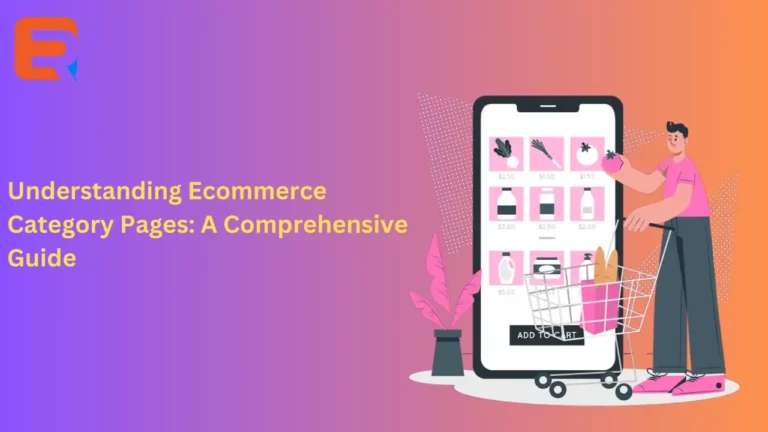Definition of Category Pages in E-commerce
Irrespective of the size of inventory available at your eCommerce store, organizing the products in categories is a must. A page dedicated to a category of products over an eCommerce website is an eCommerce category page.
The key purpose of having category pages in place is to organizedly showcase a group of products. These products would have a common set of attributes associated with them.
With the creation of eCommerce category pages, it becomes easier for a user to navigate the website and quickly centre down upon any product that he seeks to find.
Alternately, creating category pages works from the viewpoint of SEO. All relevant product page links will be accessible from the concerned category page. Quickly discovering and indexing new products simplifies search engines. All product pages are linked to the category pages, helping search engines recognize how different products relate to each other.
So, when a merchant organizes the eCommerce category pages based on SEO best practices, it accentuates the odds of online visitors getting to his store to bring more sales.
Buy shoes is a short-tail keyword that demonstrates transactional intent. Short tail keywords are associated with category pages because nothing specific is included here. When your category pages rank high in search engine rankings, the odds of making sales are higher.
Common Challenges Faced in Category Page Development
1. Finding a sync between online and offline plans
It is a must to make sure that online implementation of category plans finds sync with offline or physical store plans. Products at either location should have consistent or complementary placement, pricing, and product range.
The bid becomes complex occasionally because online and offline customer segments are different, and so are operational constraints, competitive pressures, and demand patterns.
A business needs to have a fair bit of understanding of their target customers and omnichannel strategy to keep their category plans in sync across online and offline channels. They should be aware of the value proposition they are offering across channels.
Using analytics to keep plans dynamic helps in such cases.
2. Optimization of online product assortment
Online implementation of category plans calls for the optimization of product assortment. This has a lot to do with selecting the products that you want to sell or be seen first online.
The factor that makes this bid challenging is that you cannot expect online customers to have the same degree of loyalty as offline customers. The former has more choices and their expectations are also high.
More importantly, browsing and search behaviours vary from one online customer to the other. Their product discovery processes are hence affected, and so are their purchase decisions. The use of analytics to understand customer preferences helps in this regard.
3. Finding a common ground between promotion and online pricing
An online merchant has to try and make sure that he sets the prices and discounts for the products well. This has to be based on objectives, costs, competition, and customer value. This becomes challenging because as compared to the products sold offline, online promotions and pricing are competitive, transparent, and dynamic.
Making pricing comparisons among online products is easier. So, slight changes in pricing can have a great deal of repercussions on sale volumes.
Under such circumstances, using data and analytics aids in monitoring price elasticity, customer behaviour, and market conditions.
4. Emphasis on online product placement
Enhancing online product placement delivers premium outcomes for getting more sales and earning customer loyalty. In eCommerce category pages, the products should be so arranged that they engage and attract your visitors.
This has to be done after paying a reasonable bit of heed to the matters because online product placement is complex. The degree of flexibility involved is more and the placement is more interactive. Ensuring a personalized and seamless shopping experience for consumers is a must.
By using analytics, online customers need to be targeted based on their behaviour, preferences, and interests. Using banners and popups also helps.
5. Integration of online and offline data
Integration of online and offline data vastly covers the collection, storage, analysis, and sharing of data across the various offline and online channels. This makes it easier for merchants to access an accurate and holistic view of category performance.
The challenge associated with this task is that online and offline data can have different frequency, quality, sources, and formats. Likely, requirements and regulations for security and privacy are also variable.
A reliable and robust infrastructure is a must for the integration of offline and online data.
6. Listening to your customer
Adapting to the customer feedback is a highly feasible strategy for online merchants. Customer feedback appears in the format of complaints, ratings, reviews, and comments. This way, category performance and plans can be improved.
The factor that makes this challenging is that as compared to offline feedback, online feedback is more influential, diverse, and abundant. It lays repercussions over a business’s reputation and sales.
Exploring the Advantages of Utilizing Expertrec for Category Pages
Expertec are industry veterans for all types of services associated with eCommerce category pages. You could connect with us for any specific problems that you are facing with category pages. Or, you could also contact us to come up with and implement a custom strategy to enhance the efficiency of category pages.
For any brand, we initiate our services with a logical organization of categories. This increases view times and sales. We create subcategories and long tail categories which help find products in a broader category.
Keyword-rich categories are easy to locate on search engines while category URLs are all built in a hierarchy. Crawl depth is low to ensure that search engines easily index your products.
Your customers can search for products by using attributes such as price, material, ratings, colour, etc. We also use on-page elements meticulously, like content, reviews, and FAQs. The content is replete with H1 and Title tags and the Meta descriptions are prim and proper. Rich snippets in main search results attract more customers.




